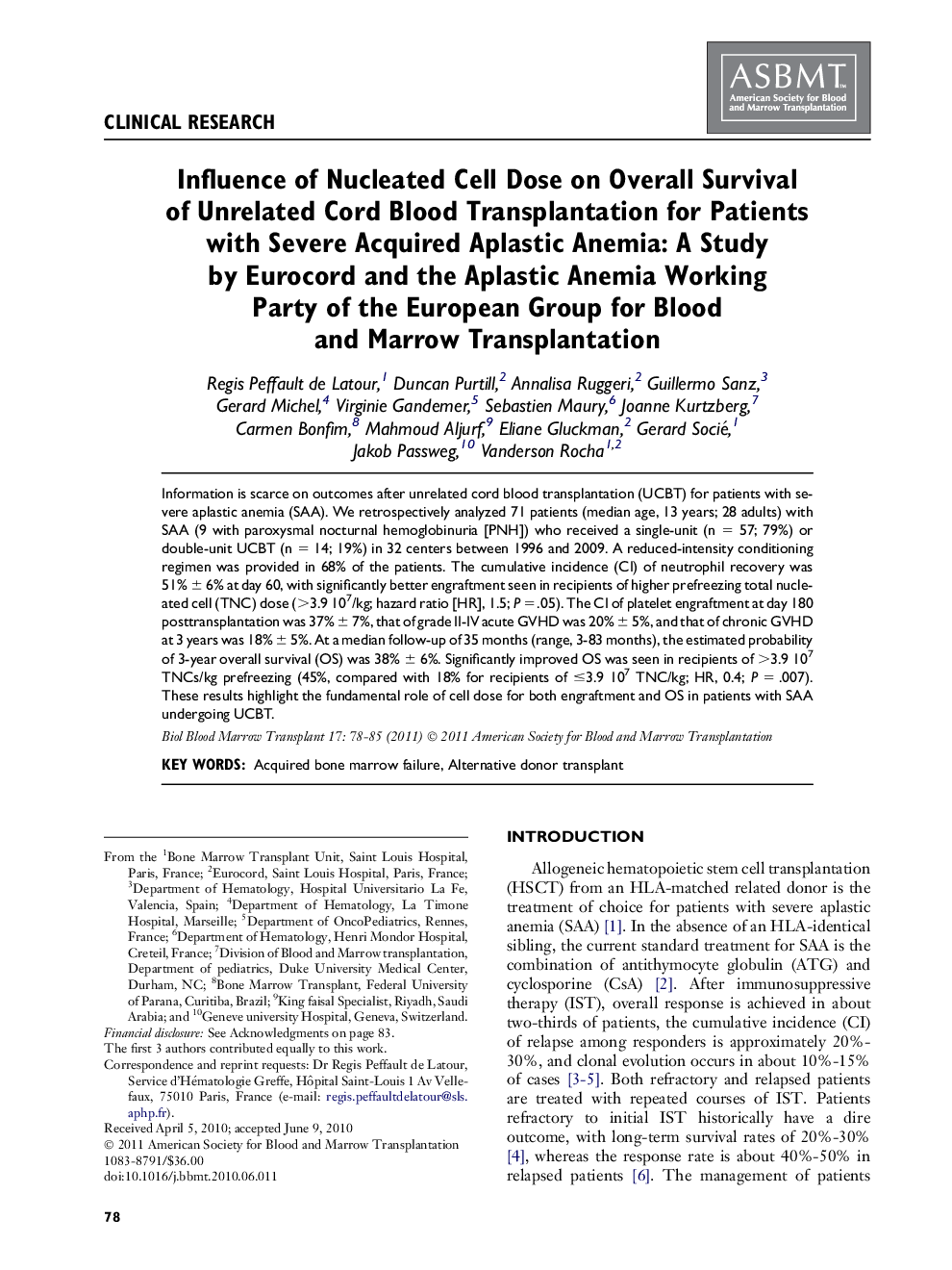| Article ID | Journal | Published Year | Pages | File Type |
|---|---|---|---|---|
| 2104015 | Biology of Blood and Marrow Transplantation | 2011 | 8 Pages |
Information is scarce on outcomes after unrelated cord blood transplantation (UCBT) for patients with severe aplastic anemia (SAA). We retrospectively analyzed 71 patients (median age, 13 years; 28 adults) with SAA (9 with paroxysmal nocturnal hemoglobinuria [PNH]) who received a single-unit (n = 57; 79%) or double-unit UCBT (n = 14; 19%) in 32 centers between 1996 and 2009. A reduced-intensity conditioning regimen was provided in 68% of the patients. The cumulative incidence (CI) of neutrophil recovery was 51% ± 6% at day 60, with significantly better engraftment seen in recipients of higher prefreezing total nucleated cell (TNC) dose (>3.9 107/kg; hazard ratio [HR], 1.5; P = .05). The CI of platelet engraftment at day 180 posttransplantation was 37% ± 7%, that of grade II-IV acute GVHD was 20% ± 5%, and that of chronic GVHD at 3 years was 18% ± 5%. At a median follow-up of 35 months (range, 3-83 months), the estimated probability of 3-year overall survival (OS) was 38% ± 6%. Significantly improved OS was seen in recipients of >3.9 107 TNCs/kg prefreezing (45%, compared with 18% for recipients of ≤3.9 107 TNC/kg; HR, 0.4; P = .007). These results highlight the fundamental role of cell dose for both engraftment and OS in patients with SAA undergoing UCBT.
